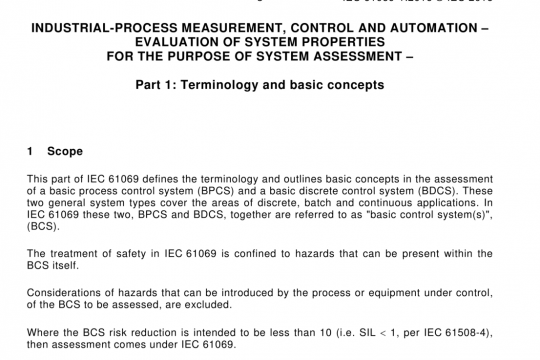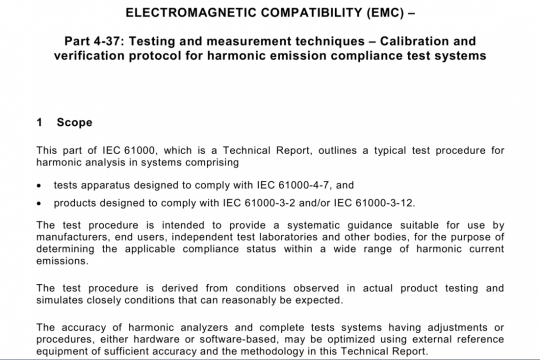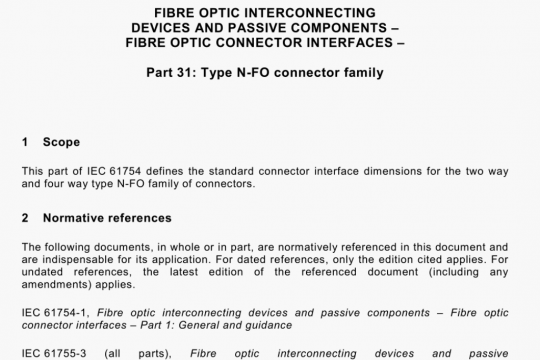IEC 62977-2-1 pdf free download
IEC 62977-2-1 pdf free download.Electronic displays – Part 2-1: Measurements of optical characteristics – Fundamental measurements.
5.3.3 Starting conditions of measurements
Measurements shall be started after the displays and measuring instruments achieve stability. The DUT shall be turned on first and operated for at least 30 mm prior to the measurement. Some display technologies may need a loop of colour patterns rendered on the screen during the warm-up period. Sufficient warm-up time has been achieved when the luminance of the test feature to be measured varies by less than ±3 % over the entire measurement period (e.g. uniformity measurements) for a given display image.
5.3.4 Conditions of measuring equipment
5.3.4.1 General conditions
Optical properties of displays shall generally be expressed in photometric or colorimetric units using the CIE 1931 standard colorimetric 2° observer (according to lSO/CIE 11664-1). Luminance can be measured by a photometer, and CIE tristimulus values (X, Y, Z) or CIE chromaticity coordinates by a colorimeter. A spectroradiometer can also obtain photometric and colorimetric values through a numerical conversion of the measured spectral radiance data (see for example [5]). The following requirements are given for these instruments.
The LMD shall be a luminance meter, colorimeter, or a spectroradiometer. For DUTs that have sharp spectral peak full-width-at-half-maximums (FWHMs) smaller than 20 nm, such as LCDs with fluorescent lamp backlights or LEDs with narrow-peak phosphors, quantum-dot phosphors, or narrow-spectrum OLEDs, a spectroradiometer should be used. A filter colorimeter should generally not be used for light sources with sharp spectral peaks. If a colorimeter is used, it shall be calibrated with the measured colorimetry values obtained from a narrow bandwidth spectroradiometer. Even with this procedure, the colorimeter will give lower accuracy results than the spectroradiometer. Report the characteristics of the spectroradiometer (as given in CIE 233) which is used for calibration. In those cases, the wavelength accuracy shall be within ±0,3 nm. The spectroradiometer shall be capable of measuring spectral radiance over at least the 380 nm to 780 nm wavelength range, with a maximum bandwidth of 10 nm for smooth broadband spectra (i.e. broad spectrum with no sharp spikes).
Care should be taken to ensure that the LMD has enough sensitivity and dynamic range to perform the required task. Before measuring the DUT, it is recommended to check the LMD specification.
The following additional best practices shall be followed:
a) The LMD shall be focused on the image plane of the display and generally aligned perpendicularly to the display surface at the centre of the active display area, unless stated otherwise.
b) The relative uncertainty and repeatability of all the measuring devices shall be maintained by following the instrument supplier’s recommended calibration schedule.
C) If the light level of the display is temporally modulated, then the LMD integration time shall be synchronized with the vertical frame synchronization signal. If the LMD is not capable of synchronizing, then the LMD integration time shall be at least 200 cycles of the fundamental Fourier Transform frequency light of the modulated light in order to measure the luminance to better than 5 %. An initial assessment of the suitability of the LMD for temporally modulated signals can be made by a repeatability measurement with at least five measurements.IEC 62977-2-1 pdf download.




